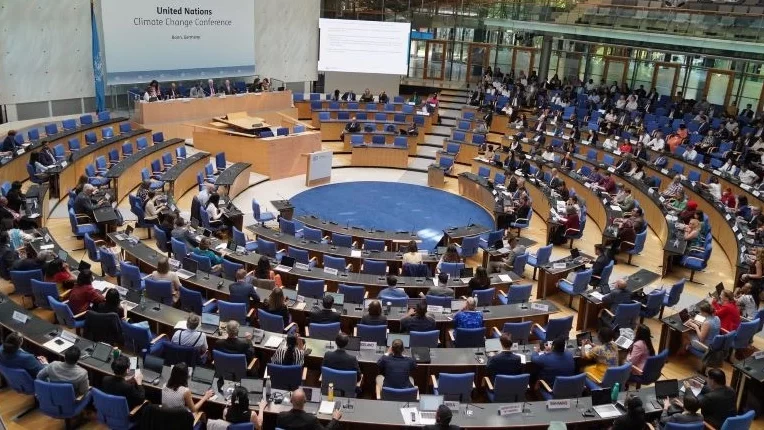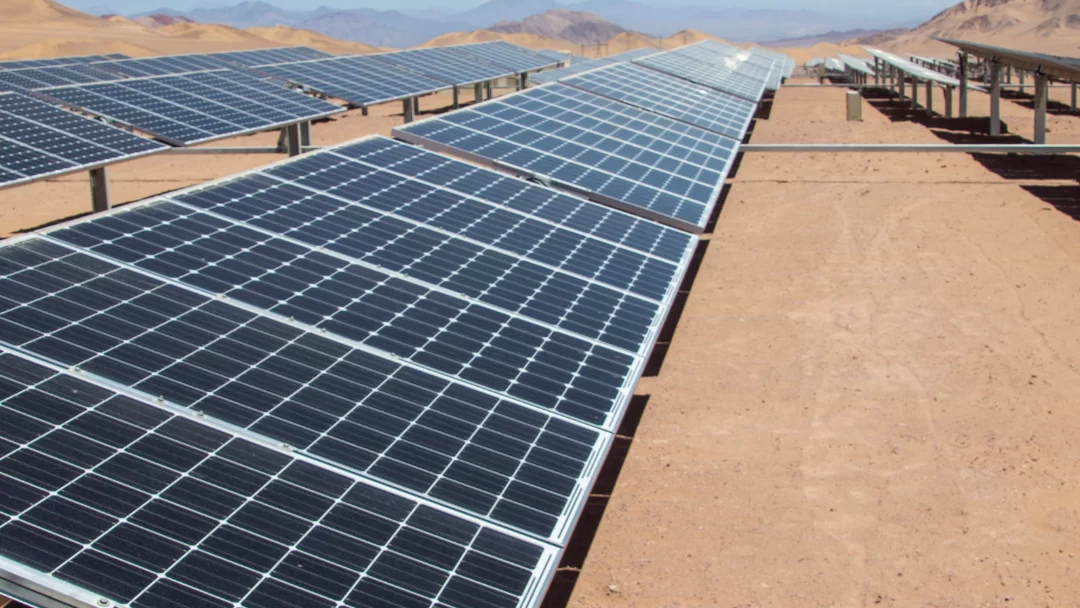2023 marks a crucial moment in our battle against climate change and the pursuit of a greener future. It’s been 33 years since the first report confirmed climate change, and now, the world is seeing significant changes. In order to understand why 2023 is so important, here is a short timeline of the Energy Transition:
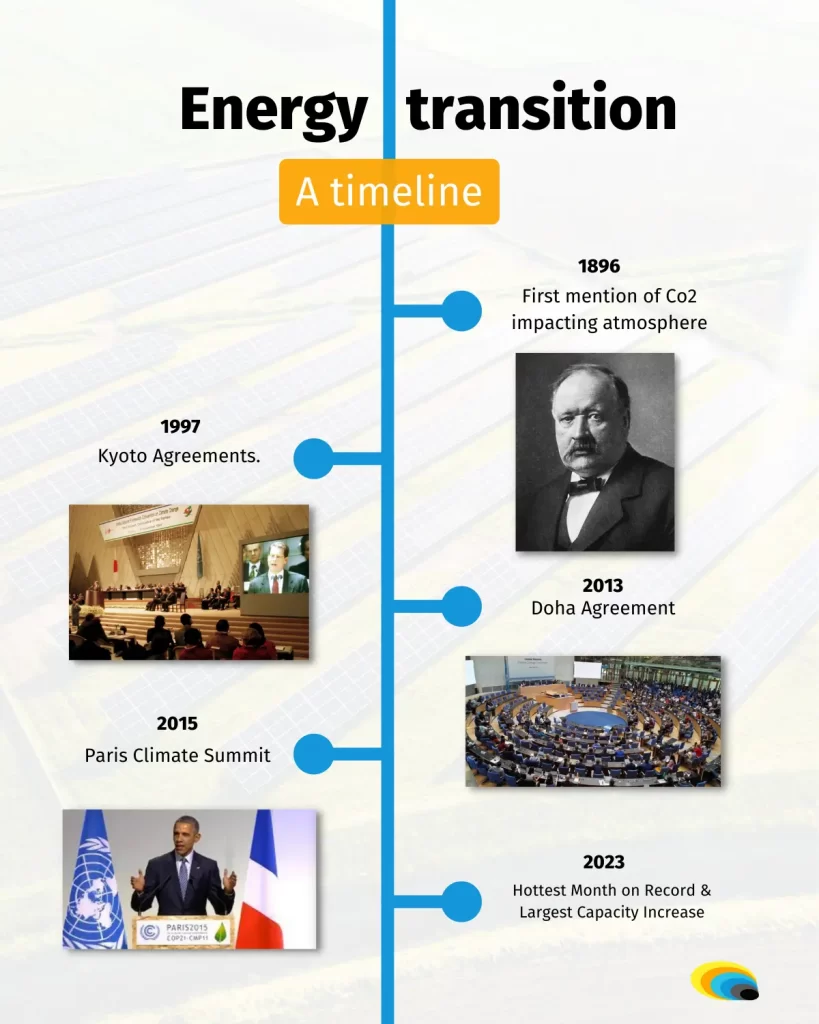
A century of change
Back in 1896, a scientist named Svante Arrhenius pointed out that carbon dioxide from factories might affect our planet’s temperature. Sadly, no one paid much attention then. Throughout the 20th century, CO2 wasn’t a big worry. But in 1990, scientists from the IPCC decided to investigate, and that marked the first big study to scientifically confirm that climate change is real. It pushed governments into action, leading to the Kyoto agreements in 1997.
A slow start
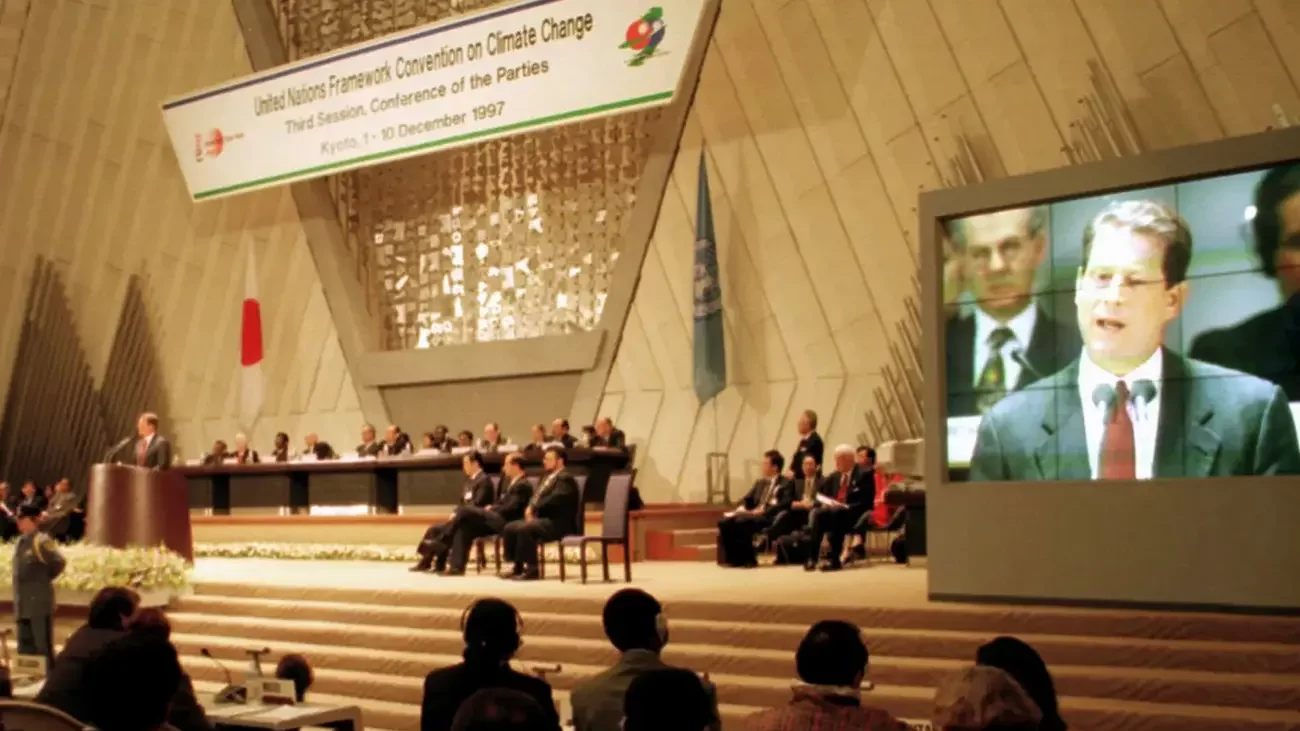
Even after Kyoto, it took another 20 years until 2013, in Doha, for countries, businesses, and groups to make more commitments. They adjusted the Kyoto rules and set new goals. The next big step came two years later when the world came together in the Paris Agreement. This was the first time everyone joined hands to fight climate change and aim for zero emissions by 2050.
The snowball effect
The Paris Agreement started a big change, but things take time. Even in 2023, we haven’t reached all our goals yet. But one thing’s clear: the renewable energy business is booming. More people are investing, and we’re creating lots of new jobs. In the past decade, this industry has given jobs to over 13 million people!
2023: A turning point in the importance of renewable energy
This year, we hit new milestones in the energy transition timeline: for the first time ever, we invested more in clean energy than in fossil fuels globally. This is just one part of a bigger trend that began in 2015. Also, 2023 saw a record-breaking increase of 107 gigawatts in renewable energy production capacity. That’s more power than Spain and Germany produce combined!
Yet, amidst these strides forward, we must also confront a new reality. The month of July in this very year has earned the dubious distinction of being the hottest ever recorded. This serves as a stark reminder of the ongoing battle between our capacity to innovate solutions and our unfortunate tendency to wreak havoc on the environment.
The Timeline of the Energy Transition in the future
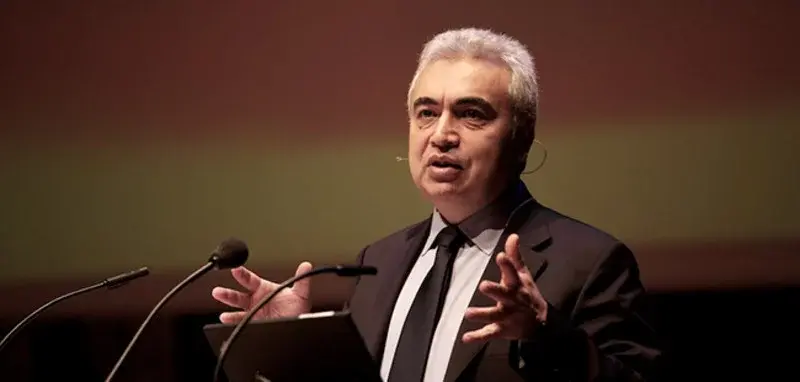
In an IEA report published in September 2023, IEA executive director Fatih Birol said:
“Keeping alive the goal of limiting global warming to 1.5 °C requires the world to come together quickly. The good news is we know what we need to do – and how to do it. Our 2023 Net Zero Roadmap, based on the latest data and analysis, shows a path forward, but we also have a very clear message: Strong international cooperation is crucial to success. Governments need to separate climate from geopolitics, given the scale of the challenge at hand”
This message of unity in the face of this challenge is essential. No actor can hope to change the fate of the Earth as humans keep polluting it by itself. A key component in the transition towards greener sources of energy is commitment, being willing to make compromises and most importantly, understanding each other as beings that are facing a common threat.
Our role in the Timeline of the Energy Transition
We fully support this message and are already contributing to the energy transition by finding, providing and training the skilled professionals needed to maintain this tremendous growth in the industry. We seek to bring a more sustainable future throughout the globe, including to communities of people that are hard to reach, guaranteeing them a brighter future. If you want to read more about us, visit wtsenergy.com/about-us

